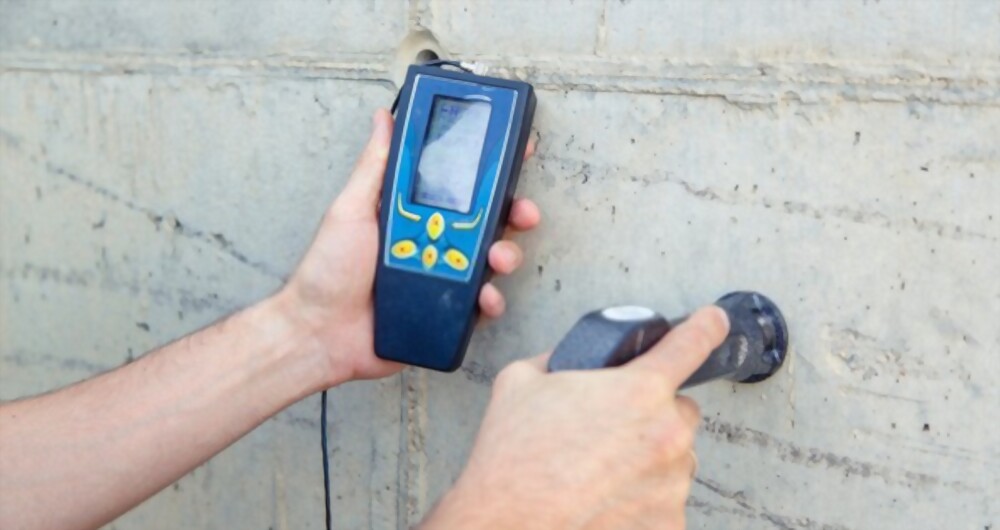Introduction to Non-Destructive Testing Concrete
In the field of construction and civil engineering, ensuring the strength, safety, and reliability of structures is essential. That’s where Non-destructive testing concrete comes in. Non-destructive testing concrete methods are vital tools for assessing the integrity of a structure without causing any harm to it. Non-destructive testing concrete plays a key role in identifying cracks, voids, or weaknesses while maintaining the structure’s usability. When applied effectively, Non-destructive testing concrete provides accurate data on durability, density, and compressive strength. Today, engineers rely heavily on Non-destructive testing concrete techniques to make informed decisions before, during, and after construction. Moreover, Non-destructive testing concrete ensures the quality of materials, confirms design parameters, and predicts future performance. With advancements in technology, Non-destructive testing concrete has become an essential part of project management for buildings, bridges, dams, and infrastructure projects. Finally, Non-destructive testing concrete saves both time and money by reducing unnecessary damage and rework while maintaining safety standards.
Understanding the Purpose of Non-Destructive Testing Concrete
The main objective of Non-destructive testing concrete is to evaluate the condition and performance of concrete structures without affecting their serviceability. This method identifies potential problems early, preventing costly repairs or replacements. Using Non-destructive testing concrete allows engineers to locate defects like cracks, delaminations, honeycombing, and voids hidden inside the concrete. Since Non-destructive testing concrete does not alter or damage the specimen, it is the most preferred approach for ongoing inspections of existing structures. Furthermore, Non-destructive testing concrete provides critical information for structural evaluation, ensuring that the project meets safety codes and regulatory standards. It allows for better decision-making throughout the construction lifecycle, from material selection to quality control and maintenance scheduling.
Popular Methods Used in Non-Destructive Testing Concrete
Several effective methods fall under Non-destructive testing concrete, each serving specific diagnostic purposes.
1. Rebound Hammer Test (Schmidt Hammer Test)
The Rebound Hammer Test is one of the most common Non-destructive testing concrete methods. It measures the surface hardness of concrete to estimate its compressive strength.
2. Ultrasonic Pulse Velocity (UPV) Test
This Non-destructive testing concrete technique evaluates the quality and uniformity of concrete by measuring the time ultrasonic waves take to travel through it. Faster waves indicate denser and higher-quality material.
3. Ground Penetrating Radar (GPR)
GPR is a modern Non-destructive testing concrete tool that detects embedded objects like rebar, voids, or cracks by using electromagnetic waves.
4. Half-Cell Potential Test
This Non-destructive testing concrete method helps detect corrosion activity in reinforced concrete by measuring the electrical potential difference.
5. Infrared Thermography
Infrared Thermography is an advanced Non-destructive testing concrete process that identifies hidden defects using heat patterns and temperature variations.
Advantages of Non-Destructive Testing Concrete
The benefits of Non-destructive testing concrete are immense, especially for long-term structural safety and cost management. One major advantage is that Non-destructive testing concrete provides accurate insights into the condition of concrete structures without any physical damage. It helps engineers determine the remaining life span of a structure, reducing risks associated with structural failures. Additionally, Non-destructive testing concrete allows early identification of potential issues, ensuring preventive maintenance. The ability to collect real-time data also makes Non-destructive testing concrete a preferred choice for modern projects where safety and performance are top priorities. Furthermore, since Non-destructive testing concrete does not require destruction or removal of materials, it saves resources and is environmentally friendly.
Applications of Non-Destructive Testing Concrete
Non-destructive testing concrete is applicable across multiple industries, from construction and infrastructure to restoration and research. It is widely used in high-rise buildings, bridges, tunnels, dams, roads, and industrial facilities. Moreover, Non-destructive testing concrete plays a vital role in assessing historical monuments where traditional destructive tests are impossible. For large-scale infrastructure, Non-destructive testing concrete ensures compliance with safety standards and provides valuable data for structural health monitoring. Even during rehabilitation projects, Non-destructive testing concrete helps engineers assess existing conditions before starting repairs.
Why Choose Us for Non-Destructive Testing Concrete Services
Choosing the right professionals for Non-destructive testing concrete can make a significant difference in the safety and performance of your project. We provide comprehensive Non-destructive testing concrete solutions with the latest technology and certified experts. Our team understands the importance of accuracy, reliability, and safety in every project. We use advanced tools such as ultrasonic devices, GPR scanners, and thermal cameras to perform precise Non-destructive testing concrete assessments. Whether it’s a residential, commercial, or industrial project, we deliver timely and detailed reports that help clients make informed decisions. Our approach focuses on minimizing downtime, maximizing accuracy, and ensuring cost efficiency through every step of Non-destructive testing concrete inspection.
5 Frequently Asked Questions (FAQs)
1. What is Non-Destructive Testing Concrete?
Non-destructive testing concrete refers to a set of techniques used to assess the condition, strength, and quality of concrete structures without causing any damage.
2. Why is Non-Destructive Testing Concrete important?
Non-destructive testing concrete ensures structural safety, detects hidden flaws, and helps prevent future failures while saving time and cost.
3. Can Non-Destructive Testing Concrete be used on old buildings?
Yes, Non-destructive testing concrete is ideal for evaluating old or historical structures where traditional destructive testing is not possible.
4. What are the most common Non-Destructive Testing Concrete methods?
Common Non-destructive testing concrete methods include the Rebound Hammer Test, Ultrasonic Pulse Velocity Test, Ground Penetrating Radar, Half-Cell Potential, and Infrared Thermography.
5. How often should Non-Destructive Testing Concrete be performed?
The frequency of Non-destructive testing concrete depends on the type of structure, environmental conditions, and project requirements, but regular inspections are recommended for optimal safety.
Conclusion
In conclusion, Non-destructive testing concrete is an essential process in modern construction, ensuring that every project—big or small—meets the highest standards of safety and durability. With its ability to provide accurate, real-time data without damaging the structure, Non-destructive testing concrete remains a preferred method for engineers and project managers worldwide. From quality assurance to maintenance planning, Non-destructive testing concrete continues to redefine the way we evaluate and preserve concrete structures, guaranteeing reliability, safety, and long-term performance for every project.



